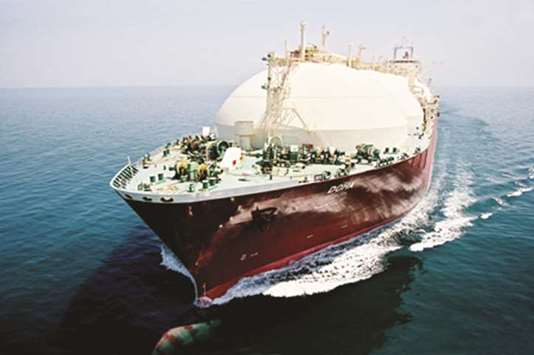It’s going to be hard to trump the world’s biggest liquefied natural gas producer on price.
Qatar can start making a profit from the fuel at three-quarters of the cost of the cheapest US projects, according to Oslo-based researcher Rystad Energy. The Arabian Gulf nation, which became the world’s richest per capita thanks to the superchilled fuel, plans to expand its own production, making it a formidable adversary as the US and Australia vie for its crown.
The nation can tap its share of the world’s largest known gas deposit and benefit from its location as it plans to expand LNG output by 30%. That may cement its position and help meet rising demand in Asia.
The US is set to overtake Australia as the second-largest LNG exporter by 2023, according to the International Energy Agency.
“The Qatari project represents a challenge for these projects as it is estimated that it has the lowest break-even price of all the planned projects in the world,” Rystad Energy said in a note.
“The main reasons for the Qatari project being more competitive are that natural gas production costs are below other regions, and its proximity to the Asian markets.”
With Australia, Qatar and the US together meeting about 60% of global supply by 2023, “the balance of power between suppliers changes,” according to the IEA.
It’s not just about bragging rights. Controlling more global supply may give Qatar more clout in negotiating contracts. That comes as buyers form powerful global alliances and regulators increasingly scrutinise the way the fuel is sold.
The US has a chance to catch up because it’s becoming cheaper to build the plants that chill natural gas to minus 160 degrees Celsius (minus 260 Fahrenheit) to turn it into a liquid for export. But lower capital expenditure costs, don’t necessarily mean cheaper LNG, Sanford C Bernstein & Co said in a report last month.
“While this looks very attractive at the surface compared to the projects in the rest of the world, capex only tells part of the story,” Bernstein said. “We need to adjust for opex-related items of gas purchases and shipping.”
In the US, projects including Cheniere Energy Inc’s Sabine Pass Train 6, Delfin LNG, Texas LNG, Tellurian Inc’s Driftwood and NextDecade Corp’s Rio Grande are all waiting for FIDs after Cheniere greenlighted a new unit at its Corpus Christi site in May. They will likely compete globally with Africa’s Mozambique LNG and Fortuna FLNG, an expanded site in Papua New Guinea and efforts from Canada to Russia.
While the new projects could help meet demand and a potential shortfall, there may be a flip side, Rystad Energy said.
“There is a risk that too many projects take FID, leading to a loose market with depressed prices after 2020,” it said.

u201cThe main reasons for the Qatari project being more competitive are that natural gas production costs are below other regions, and its proximity to the Asian markets.u201d
